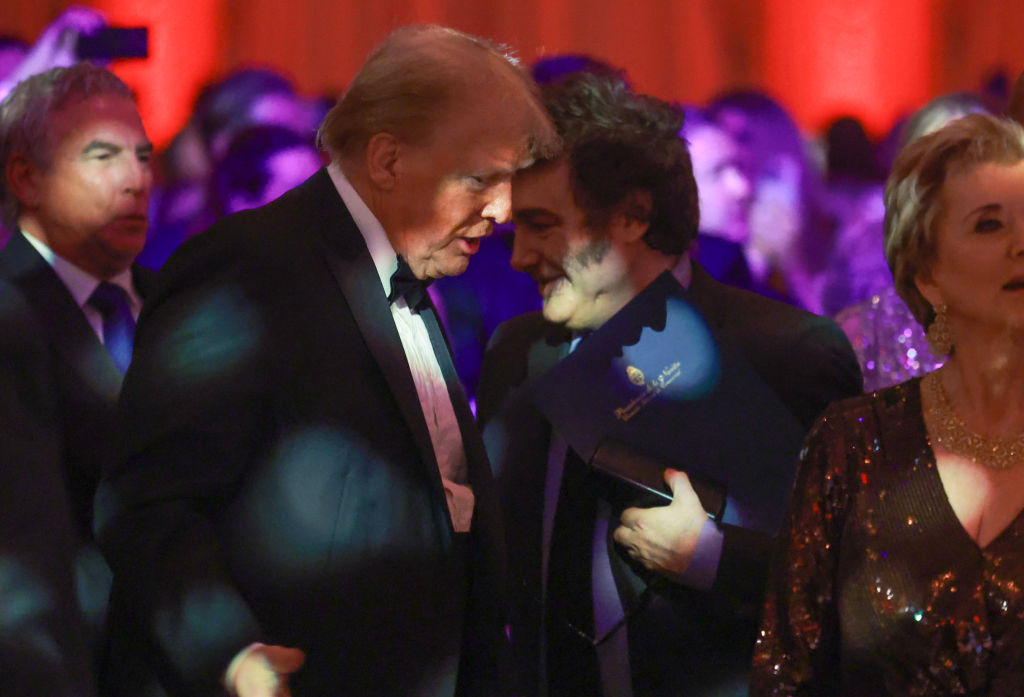Trump’s Pivot to the Americas
Renewed focus on Latin America is a welcome shift—but only if it truly advances U.S. interests.

For years, I've argued that American foreign policy suffers from a fundamental misallocation of strategic attention. While Washington has obsessed over the Middle East’s sectarian conflicts and engaged in quixotic attempts to contain China through military encirclement in the Western Pacific, our own hemisphere has been treated as an afterthought—a collection of subordinate states expected to simply fall in line with American preferences while we focus on more “important” regions.
The Trump administration’s apparent pivot toward the Western Hemisphere—most vividly displayed in the massive military buildup and maritime strikes around Latin America—represents a rare moment of strategic clarity in contemporary U.S. foreign policy, even if the specific bellicose actions getting attention are misguided. Whether intentional or not, this reorientation aligns with basic geopolitical logic that should have guided U.S. policy all along.
The Western Hemisphere, after all, is where America’s genuine strategic interests lie. This isn’t jingoism or imperial nostalgia—it’s simple geography and economics. Our borders, our trade relationships, our immigration challenges, our energy security, and our genuine national security concerns are all fundamentally tied to what happens in Latin America and the Caribbean. Chinese port investments in Peru or Russian military advisers in Venezuela pose more concrete challenges to American interests than most of what transpires in the South China Sea or the Levant.
Yet for the past quarter-century, Democratic and Republican administrations alike have largely ignored the region, except when crises—migrant caravans, Venezuelan refugees, fentanyl trafficking—forced temporary attention. Meanwhile, extra-hemispheric powers like China have quietly established economic beachheads throughout the region, exploiting Washington’s neglect.
The Trump administration’s focus on the Western Hemisphere also reflects a necessary recognition of the limits of American power. The United States cannot be everywhere, doing everything, for everyone. The “unipolar moment” has ended, if it ever truly existed. We lack the resources, the public support, and frankly the competence to micromanage conflicts in Eastern Europe, the Middle East, East Asia, and our own neighborhood simultaneously.
A rational grand strategy would prioritize. And any rational prioritization places the Americas at the top. This is where American power projection is most feasible, where our economic leverage is greatest, and where the consequences of instability most directly affect American citizens.
The key question is whether this pivot represents a sophisticated strategy of hemispheric engagement or merely a return to heavy-handed interventionism. The history of U.S.–Latin American relations is littered with counterproductive military interventions, support for unsavory dictators, and economic policies that bred resentment while failing to achieve their stated objectives.
A genuinely strategic approach would focus on the following:
Economic integration: Deepening trade relationships and supply chain partnerships that benefit both the United States and our hemispheric neighbors, reducing dependence on China while creating mutual prosperity.
Selective engagement: Recognizing that not every Latin American political development requires American intervention. Some problems are best left to regional actors to resolve.
Counter-hegemonic realism: Working to prevent extra-hemispheric powers from establishing military or intelligence footholds that could threaten U.S. security, without assuming this requires regime change or nation-building.
The true measure of this pivot will be whether it represents a sustainable reorientation of American strategic culture or merely another temporary enthusiasm. Washington’s foreign policy establishment remains deeply invested in the global hegemon mindset. The lobbies advocating for Middle Eastern intervention or China containment are well-funded and influential.
Subscribe Today
Get daily emails in your inbox
For the Western Hemisphere focus to endure, it must be grounded in a broader reconceptualization of American interests—one that recognizes that a nation cannot be a global policeman and a functioning republic simultaneously. It must resist the temptation to treat Latin America as simply another theater for securing total U.S. primacy and control, and instead recognize it as the region where American prosperity and security are most authentically engaged.
If the Trump administration’s pivot represents a genuine shift toward this strategic realism—prioritizing the near over the far, the vital over the peripheral, the achievable over the aspirational—it may prove to be one of the more significant recalibrations in American foreign policy in decades. If it’s merely nationalist rhetoric masking the same old interventionist impulses with a different accent, it will fail like so many initiatives before it.
Time will tell. But for once, Washington at least seems to be looking in the right direction—even if it may not yet fully understand what it’s looking at.